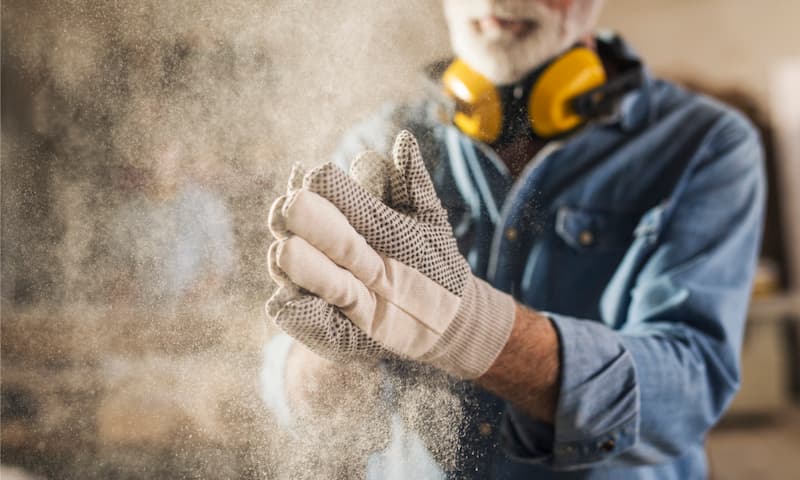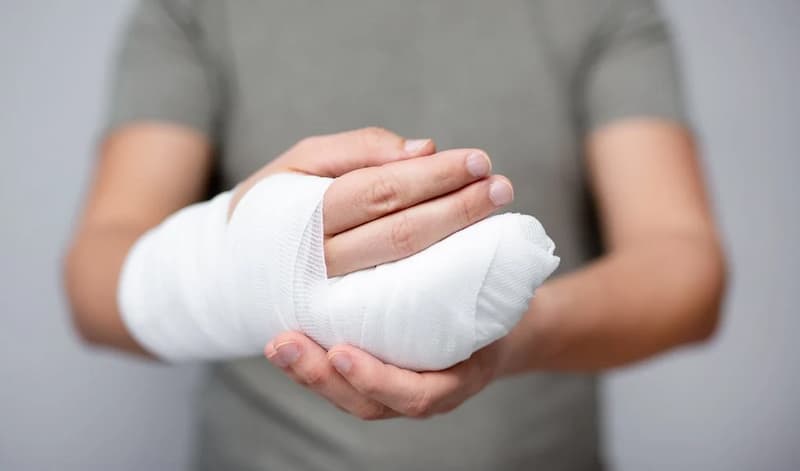Our hands are our most valuable tools. They’re highly adaptable and precise. They’re also quite susceptible, as various risks can pose a threat to your hands. We often minimise the constant use of our hands in our daily work activities, whether gripping tools or typing on a keyboard. Consequently, our hands endure significant strain and require adequate protection.
Hand safety involves taking necessary precautions to safeguard your hands against injuries and potential hazards. By implementing proper hand safety measures, you can effectively prevent hand injuries and maintain the health of your hands.
Common Hand Hazards

It’s crucial to be aware of the common risks to protect yourself from hand hazards in the workplace. According to the US Bureau of Labor Statistics, hand injuries have the highest reported case number among other body parts, totalling around 102,350 incidents.
Here are the critical hand hazards to watch out for:
- Pinch Points. Areas where hands can get caught and pinched between moving machine parts or materials. Examples include printing presses, power presses, and conveyors.
- Hot and Cold Spots. Extreme temperature areas can cause burns, such as machinery hotspots and transfer pipes in refrigeration systems.
- Rotating Equipment. Machines with rotating parts, like spindles and fans, can accidentally catch loose-fitting gloves or the worker’s hands, leading to injuries.
- Automation. When programmed to start automatically, machines can catch workers off guard and potentially cause hand injuries.
- Entanglement. Clothing or jewellery gets caught in moving machinery, resulting in fingers or hands being pulled inside.
Other common hand injuries include cuts from sharp objects, bruises from heavy objects, burns from chemicals or hot surfaces, amputations caused by contact with sharp objects, and crushing injuries from inadequate support of heavy objects. Remaining vigilant and taking preventive measures is crucial to ensure hand safety in the workplace.
How Can You Protect Your Hands from Injuries?

Everyone should be aware of a few fundamental hand safety principles. The Occupational Safety and Health Administration (OSHA) states that when exposed to hand hazards at work, workers must follow the standards 1910.138(a) and 1910.138(b). You can also adhere to some of these recommendations to keep your hands secure and free from harm.
Use PPE
Depending on your job, there are many ways to keep your hands safe. Using the proper personal protective equipment (PPE) at all times for the job can help you immensely. Here are some guidelines to help you choose adequate hand safety equipment, including gloves, hand shields, and other accessories.
When choosing the right glove, consider these factors:
- Fit and movement. Ensure gloves fit well and allow necessary activities without hindrance. A glove that doesn’t suit properly is hazardous. A too-big one can make it more difficult for your hand to keep it in place, reducing dexterity and increasing tiredness. A too-small glove will limit motion, be uncomfortable, and encourage excessive sweating. Make sure to choose gloves that are the proper size by measuring your hands. Speak with your safety manager if you have trouble finding gloves that fit you comfortably.
- Hand and arm protection. Determine if you need longer gloves covering the forearms or arms for comprehensive protection.
- Grip requirement. Assess if workers need gloves with enhanced grip for handling slippery substances.
- Specific hazards. Identify the risks workers face so you can select appropriate gloves. Some gloves offer multiple protections, such as chemical resistance and abrasion resistance.
For everyday work gloves:
- Prioritise dexterity, grip, and durability for rough environments with various hazards.
- Consider vibration suppression for tasks involving machinery.
- Evaluate the need for waterproof or water-resistant gloves based on the work environment.
For cut-resistant gloves:
- Choose gloves with appropriate cut resistance levels based on the specific cutting tasks.
- Begin with reliable and safe cutting tools for added safety.
For chemical-resistant gloves:
- Select gloves that protect the specific chemicals workers handle.
- Avoid using gloves with holes or excessive wear to prevent chemicals from getting trapped inside.
- Ensure the chosen gloves meet the necessary standards and are in good condition for adequate hand protection.
Wear Gloves as Directed and Keep Them On
Speak with your safety manager if you need additional agility or tact while wearing your hand safety equipment or if the gloves are unpleasant. Only try to perform your duties with them. If a different glove will give you the comfort you require without compromising your protection, your safety manager will assist in finding a fix.
Understanding When to Replace a Glove

It is necessary to replace all gloves, even washable ones. Follow recommendations for the number of times or hours you should wear each pair of gloves, and keep an eye out for signs of wear and tear on your gloves. Before starting each shift, check your gloves for snags, pulls, and peeling. Use a new pair of gloves if you notice any thin patches, holes, pulls, tears, or excessive wetness.
Follow the Donning and Doffing Protocols
You must put on and take off safety gloves to thoroughly protect your skin. Always place them after putting on coveralls, goggles, sleeves, or any other PPE, and ensure you do so before being exposed to chemicals, pollution, or risky tools and jobs. When it’s time to take off your gloves, avoid any potential dangers. Follow the safe donning instructions, and be sure to clean and store your gloves properly if they are reusable or correctly dispose of them if they are single-use.
Don’t Wear Jewellery on Your Hands or Wrists
Before putting on your gloves, take off any bracelets and rings. Even discreet jewellery worn inside a glove can alter the fit, reduce a glove’s protection, and impair its dexterity. Due to their potential to produce snags, pulls, and punctures, the protruding edges of bracelet clasps and ring settings are particularly harmful. Your chance of suffering a hand injury can be dramatically increased by even the slightest tug or puncture on the interior of your glove.


Leave a comment